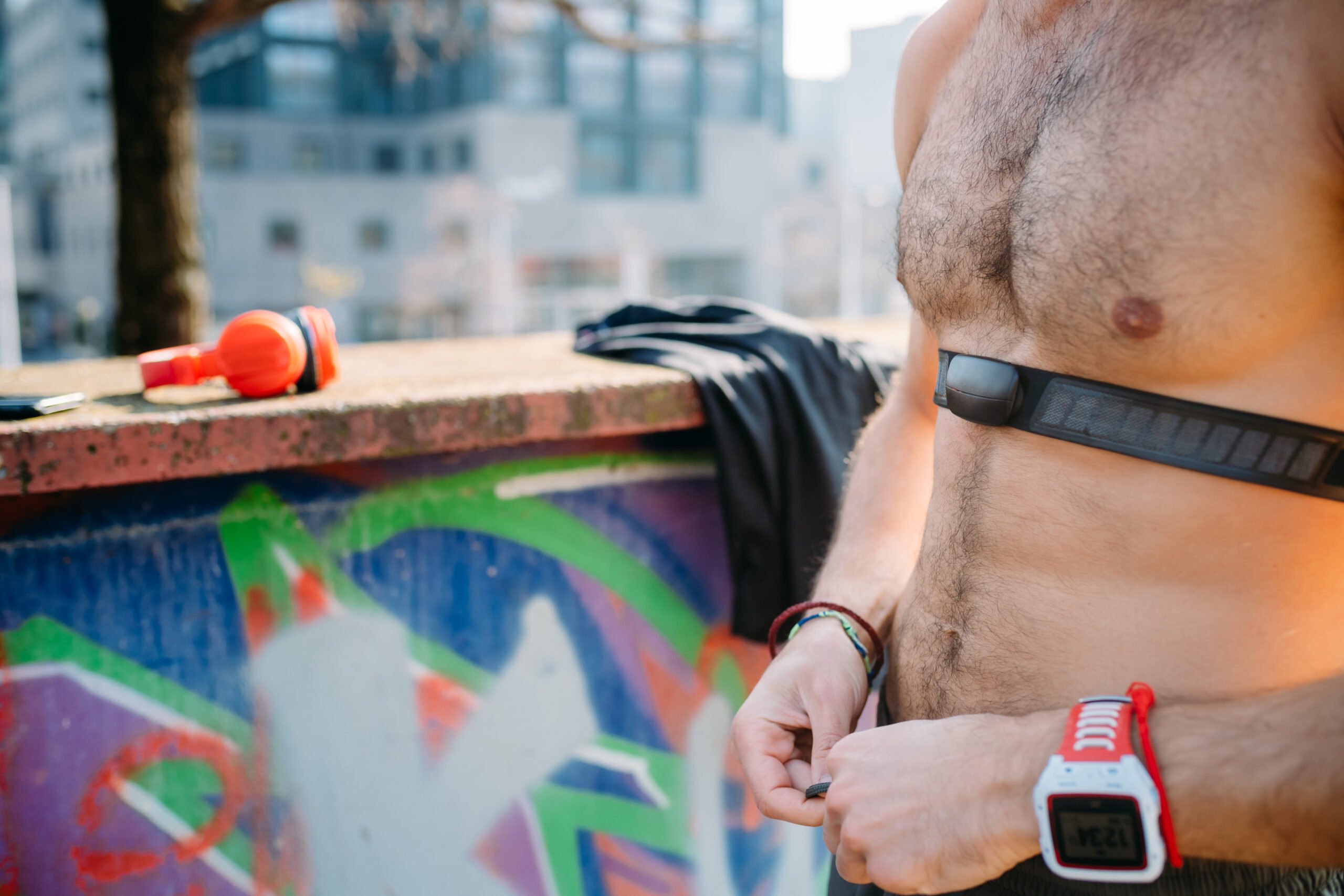Concerned that you might be running with a stress fracture? Then you’ve come to the right place.
When it comes down to it, most runners are well aware of the red flags of classic overuse injuries such as runners knee and Achilles tendonitis, but what they might be missing on are stress fractures.
Here’s the deal: Catching these sneaky injuries early is crucial. Think of it as spotting a tiny crack in your favorite mug; ignore it, and you’re one hot coffee away from a mess.
Worry no more.
Today, I’m zeroing in on the red flags of stress fractures. We’ll uncover the warning signs that scream for attention and arm you with strategies to prevent them from escalating.
Sounds like a good plan?
Then let’s dive in.
Understanding Stress Fractures In Runners
Diving into the world of stress fractures isn’t exactly a walk in the park—or a comfortable run, for that matter. Now, I’m no doctor, but I’ve had my fair share of running-related bumps in the road, and I’m here to share some down-to-earth insights with you
Imagine your bones as the roads you pound on during your runs. Over time, just like those roads can wear down and crack, so can your bones. That’s when stress fractures enter the scene, acting like unwanted potholes on your favorite running trail.
These fractures are the sneakier, less dramatic cousins of the fractures you get from a one-off accident. They’re the ninjas of bone injuries, creeping up on you gradually rather than with a sudden, unmistakable pain.
One of the trickiest things about stress fractures is that they don’t show up on X-rays. They’re so tiny that compared to full-blown fractures, they’re practically invisible on scans.
Belonging to the broader family of “stress-related injuries,” stress fractures are the result of putting too much pressure on your bones. This pressure doesn’t have to be dramatic; it accumulates over time through repetitive force and usage. It starts off as a minor annoyance—think of it as that irritating pebble in your shoe. Ignore it, though, and it can escalate into a significant, boulder-sized problem.
The moral of the story? Pay attention to the small signs your body gives you. That minor discomfort could be the early whisperings of a stress fracture, urging you to ease up and give your bones the care they need.
Early Warning Signs of Stress Fractures
My own running path has taught me the art of tuning into the body’s subtle distress signals, especially those heralding stress fractures. These signs are indeed crafty, often beginning as a pinpointed discomfort in areas like the foot, shin, or hip. It’s a persistent pain that seems to say, “Heads up, we’ve got trouble!” each time your foot hits the ground.
Initially, I brushed it off as typical running soreness, but this pain played by different rules. It stuck around, growing more intense with continued activity and taking a backseat only during rest periods. It was a bewildering chase, trying to figure out why my body was sounding the alarm.
The moment of truth hit when I recognized that ignoring these cues was akin to driving a car with its check engine light on and hoping for the best. Addressing stress fractures early is like fixing a minor crack in a dam before it leads to a catastrophe.
And it’s not just personal experience speaking. Research, including a study from the “American Journal of Sports Medicine,” supports the idea that early identification and management of stress fractures can drastically reduce recovery time, helping runners return to the track much quicker.
Let me dive in the main signs to be aware of:
Swelling:
Picture this – you’ve just wrapped up a run, and you notice your foot looks a bit swollen, as though it’s hanging onto the run just as tightly as you clung to those last few miles. This swelling, though subtle, is your body’s way of sending up a flare, signaling that something’s amiss. It’s akin to that dashboard light in your car you never want to see lit up but always need to keep an eye on.
Bruising:
Bruising is your body’s visual testament to a battle beneath the skin. When it comes to stress fractures, it’s as if your bone is sending out an SOS signal.
This bruising, your body’s version of a battle wound, might not always be visible to the naked eye but is a clear indicator of the internal strife your bones are enduring.
Think of it as evidence of the internal skirmish taking place as your body tries to cope with the undue stress it’s been subjected to.
Pain That Worsens with Activity:
Some discomforts have a way of announcing themselves only when you’re in motion, much like a squeaky wheel that’s silent until you start to roll. This type of pain is exactly that – it lays dormant when you’re at rest, only to flare up and demand attention with every step you take.
It’s as if your foot is pleading with you, urging you to reconsider your actions every time you apply pressure. This escalating pain with activity is not just a nuisance; it’s a critical message from your body that something is not right within.
Pain that Eases with Rest:
You finally decide to give your feet a well-deserved rest, and just like magic, the pain decides to pack its bags and leave as well. It’s as if your body breathes a sigh of relief and says, “Thank you! That’s exactly what I needed.”
This vanishing of pain as soon as you stop pounding the pavement is your body’s way of rewarding you for taking a step back and allowing it some time to recover.
Spot Tenderness:
If you press on a certain spot and feel an immediate, sharp response—like you’ve just pressed a buzzer—it’s a direct message from your body. Unlike the diffuse soreness that might follow a grueling workout, this localized alert is your body pointing out precisely where the trouble lies.
Evolving Pain:
At first, this crafty pain might only tail you during or immediately after a run, much like an unwelcome shadow that’s most apparent when you’re in the thick of it. But if you let it linger unchecked, it starts to set up camp, becoming a more persistent part of your daily life. This progression signals that the stress fracture is becoming more entrenched.
Resistance to RICE:
For many running injuries, RICE (rest, ice, compression, elevation) is a tried and true recovery method. However, when you’re dealing with a stress fracture, you might find this reliable approach loses some of its effectiveness. The pain may retreat temporarily, only to return with a vengeance, seemingly indifferent to these standard self-care measures.
Seeking Out the Pros
If you suspect a stress fracture in your foot or other parts of your body, then it’s crucial to consult with the right medical professionals. A specialist in sports medicine or orthopedics is your go-to person, equipped with the expertise to get to the bottom of your symptoms, much like a seasoned mechanic knows their way around a car engine.
The Diagnostic Process
Your journey to a diagnosis starts with a thorough physical exam. Your doctor will look for telltale signs of a stress fracture by applying pressure to specific areas to identify any tenderness, which is a clear indicator of a problem. They’ll also evaluate your range of motion, muscle strength, and how well your body is aligned, ensuring everything is working together smoothly.
Conservative Treatments: The First Steps to Recovery
Recovering from a stress fracture typically begins with non-invasive, conservative methods:
- Rest: Essential for healing, rest means taking a break from running or other high-impact activities to allow your body to repair itself.
- Ice: Just as you might ice a muscle after a hard workout, applying ice to the affected area reduces inflammation and swelling.
- Compression: Using compression wraps can support and stabilize the injured area, helping to control swelling, much like your compression running tights support your muscles.
- Elevation: Elevating the injured part of your body helps to improve circulation and reduce swelling, offering your body the downtime it needs to heal.
- Casting: For some stress fractures, a cast might be necessary to immobilize the area, ensuring the bones heal properly and stay aligned.
- Medications: Your doctor may recommend pain relievers and anti-inflammatory drugs to ease discomfort and reduce inflammation during your recovery.
When Surgery Is on the Horizon
Not getting well despite the conservative treatments? Then surgery might be the next step. This decision is similar to realizing that despite all efforts, you need to change your strategy to overcome a persistent challenge.
Surgical options are considered when it’s clear that more direct intervention is needed to heal the stress fracture fully. This discussion with your healthcare provider will be detailed, ensuring you understand the procedure, recovery, and any risks involved, akin to preparing meticulously for a race with challenging conditions.















